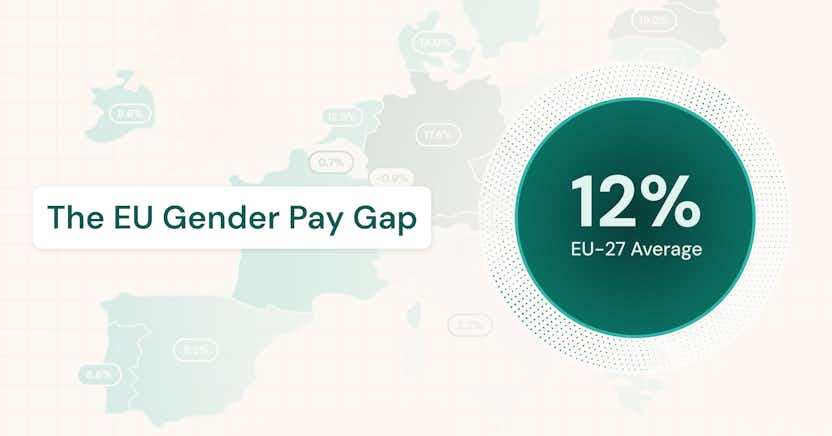What Is Pay Equity?
Pay equity refers to the principle of compensating employees fairly and consistently for work of equal or comparable value, regardless of gender, race, ethnicity, age, disability, or other protected characteristics. It involves identifying and correcting unjustified pay disparities to ensure that compensation decisions are based on objective, job-related criteria. While often associated with gender equality, pay equity encompasses broader issues of workplace fairness and anti-discrimination.
Pay equity is distinct from legal compliance alone; it is both an ethical imperative and a strategic objective. It goes beyond ensuring equal pay for identical work, addressing structural and systemic issues in how compensation is determined, managed, and maintained across an organization.
Why is pay equity important?
Pay equity matters for legal, ethical, and business reasons. From a legal standpoint, many jurisdictions have enacted legislation requiring employers to identify and correct unjustified pay gaps. For example, the EU Pay Transparency Directive and various U.S. state laws mandate increased transparency, pay audits, and employee access to compensation data.
Ethically, pay equity reflects a commitment to fairness and inclusion. Employees expect to be treated equitably, and pay is one of the most visible and emotionally charged indicators of perceived value. Unfair pay practices can erode trust, damage morale, and perpetuate inequities.
From a business perspective, organizations with strong pay equity practices are more likely to attract and retain talent, avoid litigation, and maintain a positive employer brand. Research also suggests that equitable compensation contributes to improved engagement, performance, and diversity outcomes.
Key features and types of pay equity analysis
Pay equity analysis can take many forms depending on the regulatory context, organizational structure, and available data. However, most approaches include several core features:
- Job comparability: Determining whether roles are of comparable value based on factors like skills, responsibilities, effort, and working conditions, even if job titles or functions differ.
- Controlled pay gap analysis: Using statistical models to measure pay gaps while controlling for legitimate explanatory variables (such as experience, performance, location) to isolate potential bias or discrimination.
- Uncontrolled pay gap analysis: Examining average pay differences across groups without controlling for other variables. This is often used for public reporting.
- Intersectional analysis: Looking at how different identity factors (such as race and gender together) affect pay disparities.
- Remediation modeling: Identifying individuals who are underpaid relative to peers and simulating the cost and impact of salary adjustments.
- Policy and process review: Evaluating how compensation decisions are made (such as hiring, promotions, bonuses) to uncover structural sources of inequity.
Why is pay equity necessary?
Compensation systems are influenced by a wide range of subjective and structural factors. Even when organizations have well-intentioned policies, unconscious bias, inconsistent practices, or legacy salary decisions can lead to inequities over time.
Pay equity is necessary to:
- Detect and correct hidden disparities before they result in compliance issues or employee dissatisfaction.
- Ensure that pay decisions align with company values and DEI commitments.
- Meet growing legal requirements for transparency and auditability.
- Build a strong foundation for fair, defensible, and future-ready compensation practices.
In complex global organizations, the challenge is compounded by variations in local laws, job structures, and cultural norms. As such, pay equity requires robust data analysis, cross-functional collaboration, and a long-term commitment to continuous improvement.
Who benefits from pay equity?
- Employees benefit directly from more transparent and equitable compensation. They gain confidence that their contributions are valued fairly, which supports trust, motivation, and retention.
- HR and Compensation teams gain clearer insights into compensation trends and risk areas. Pay equity analysis also helps these teams drive consistency in pay decisions across regions and functions.
- Finance and executive leaders benefit from stronger governance and a lower risk of legal action or non-compliance with regulatory requirements. Fair compensation practices support workforce planning and cost management.
- The organization as a whole strengthens its employer brand, supports diversity and inclusion goals, and ensures readiness for regulatory audits and public disclosures.
What is the difference between pay equity and equal pay?
While often used interchangeably, pay equity and equal pay are distinct concepts.
- Equal pay refers to paying individuals the same wage for doing the same job or work of equal value. It is typically grounded in legal requirements.
- Pay equity is broader, encompassing not just equal pay for equal work, but also identifying and correcting systemic patterns of pay disparity across job levels, functions, or identity groups.
In essence, equal pay is a component of pay equity, but achieving true pay equity requires a more comprehensive analysis and ongoing monitoring of pay structures and decisions.
How can you evaluate whether your pay equity strategy is effective?
Common signs that a pay equity strategy may not be working include:
- Employees questioning or challenging their compensation.
- Unexplained pay gaps across demographic groups.
- Lack of clarity in how pay decisions are made.
- Inability to respond to regulatory audits or reporting requirements.
- Poor performance on DEI metrics related to advancement or retention.
Key metrics for evaluating pay equity include:
- Adjusted and unadjusted pay gaps by gender, race, and other demographics.
- Representation by level and pay band.
- Rate of pay adjustments made to address disparities.
- Turnover and engagement trends by demographic group.
- Progress toward internal pay equity goals over time.
What are best practices for pay equity?
- Conduct regular audits: Annual or bi-annual pay equity audits help track progress and identify new issues as your workforce evolves.
- Use a consistent methodology: Establish a clear framework for job comparability, pay factors, and statistical modeling.
- Understand pay compliance requirements for the geographical areas where your company operates.
- Align with compensation philosophy: Ensure your pay equity strategy supports your broader compensation goals and values.
- Address root causes: Go beyond surface-level adjustments and evaluate the processes that create disparities, such as hiring, promotion, or performance evaluation practices.
- Build cross-functional ownership: Involve HR, legal, finance, and executive leaders to ensure alignment, accountability, and long-term commitment.
- Communicate transparently: Share your approach and progress with employees in a way that builds trust without over-promising or creating risk.
- Leverage technology: Use tools that provide reliable analytics, visualization, and remediation support at scale.
Frequently asked questions (FAQs) about pay equity
- Is pay equity legally required?
In many jurisdictions, yes. Laws vary by country and region, but the trend is toward increasing regulation and enforcement around pay equity and transparency. - How often should we conduct a pay equity analysis?
At minimum, once per year. More frequent analysis may be necessary during major organizational changes (for example mergers or restructuring). - Can pay equity analysis be done manually?
Technically yes, but manual approaches are difficult to scale and prone to error. Most large or complex organizations use technology or consulting support. - What if we find a pay gap? Are we required to fix it?
Legal requirements vary, but best practice is to remediate unjustified gaps and document the process. Transparency and fairness are key. - How does pay equity relate to performance-based pay?
Pay equity does not mean that pay has to be equal regardless of performance. It ensures that performance-based pay is applied fairly and consistently across all groups. - Does pay equity apply globally?
Yes, although laws and cultural expectations differ. A global pay equity strategy should account for both local compliance and overarching principles of fairness.
Summary
Pay equity is a foundational component of modern compensation strategy. For compensation and benefits professionals, it is both a legal obligation and a strategic opportunity to drive fairness, compliance, and workforce engagement. Achieving pay equity requires more than periodic audits—it demands ongoing evaluation, structural insight, and a commitment to equitable outcomes. By embedding pay equity into compensation governance, organizations can foster trust, attract diverse talent, and future-proof their HR practices.






